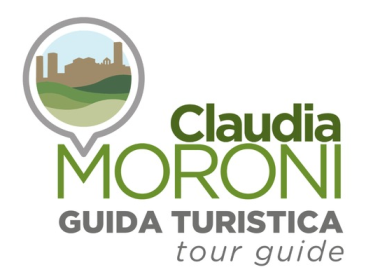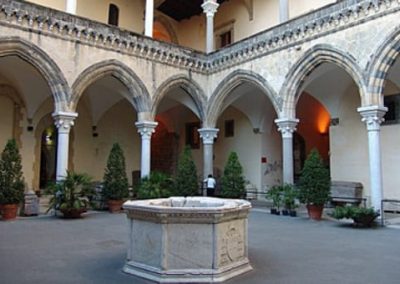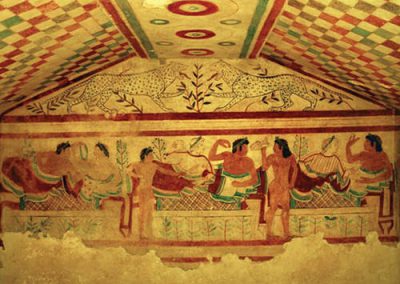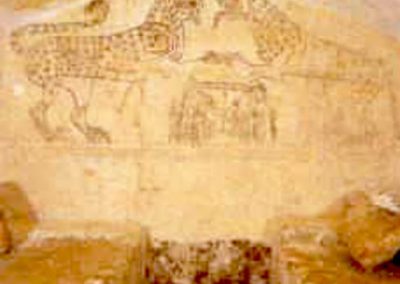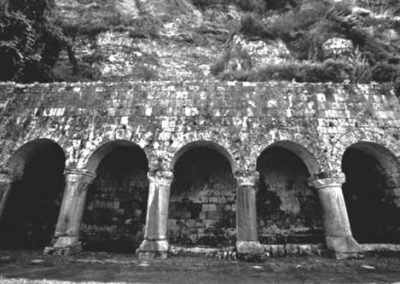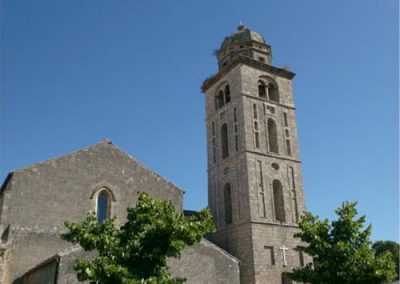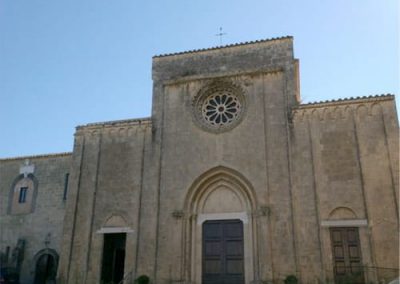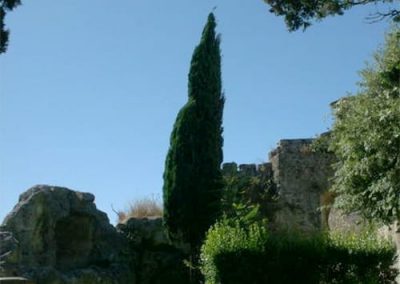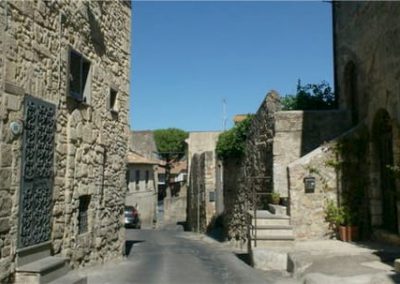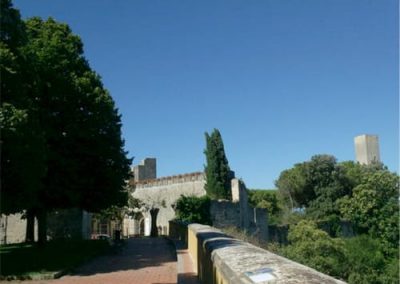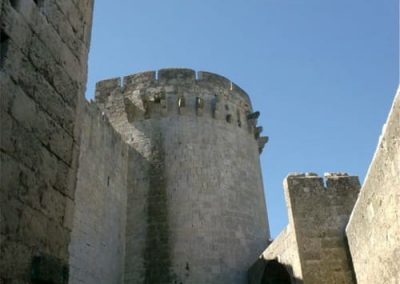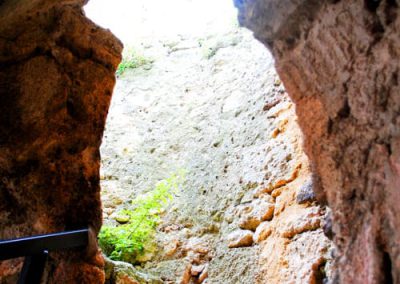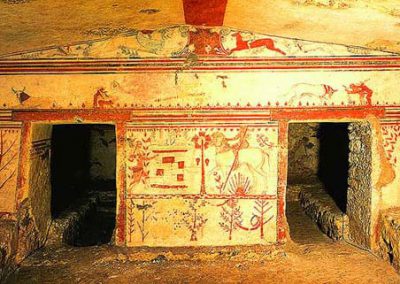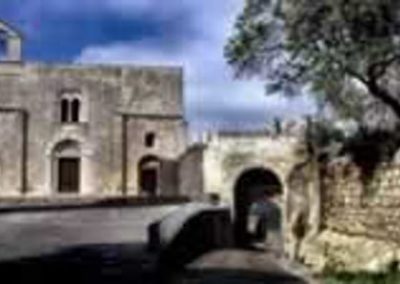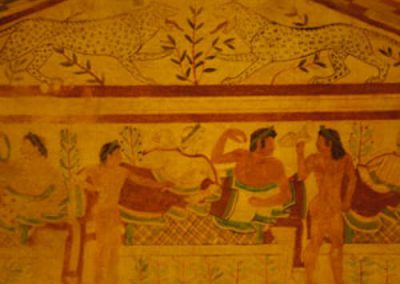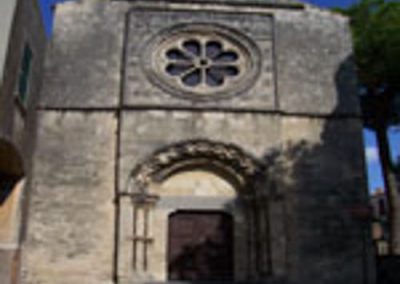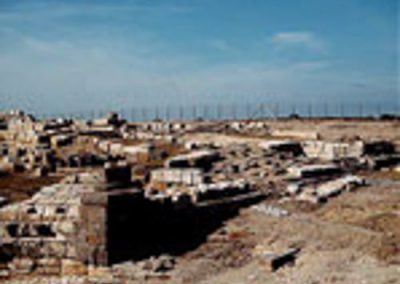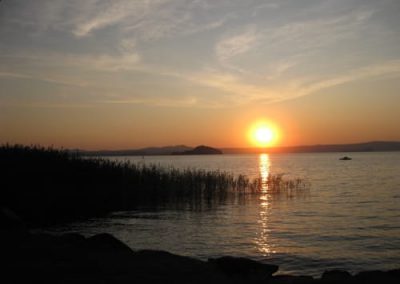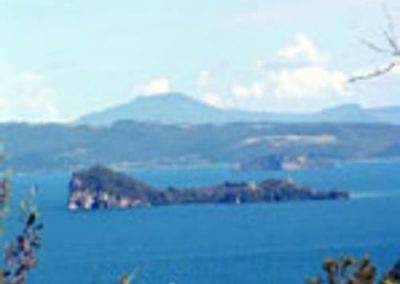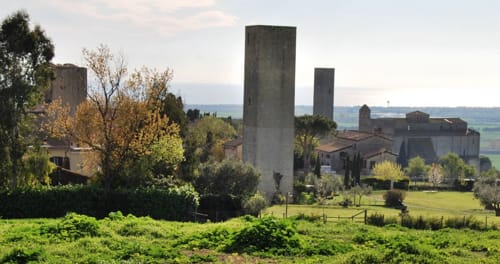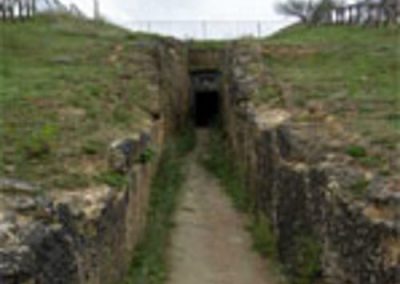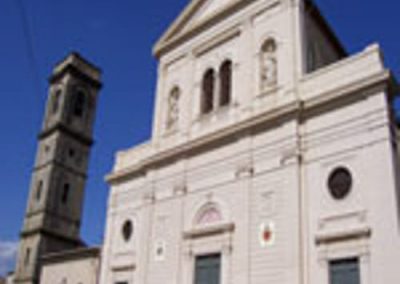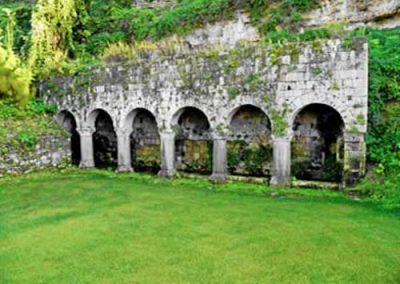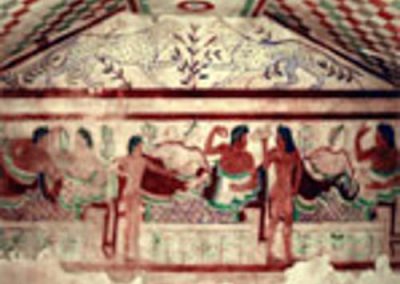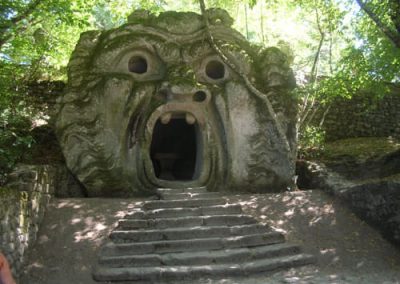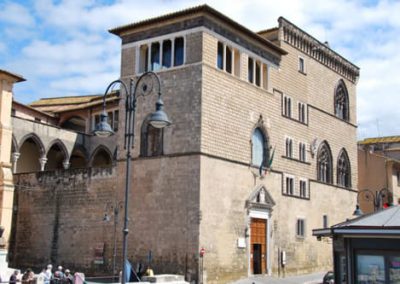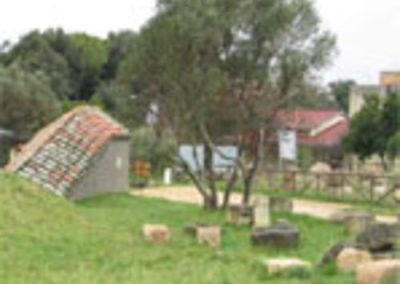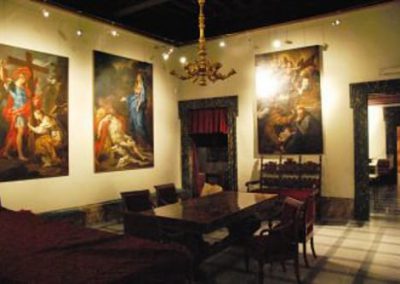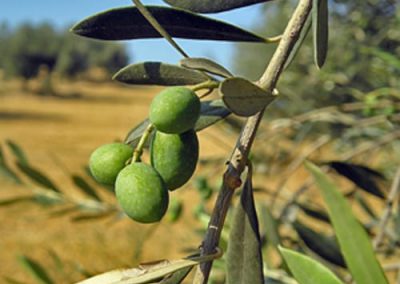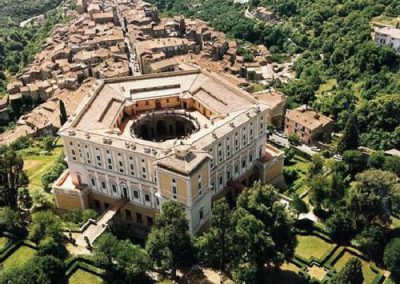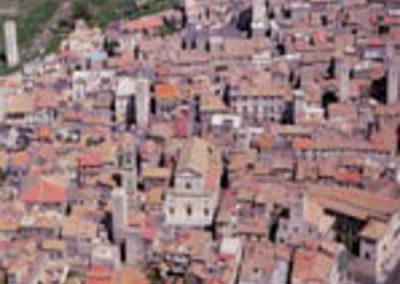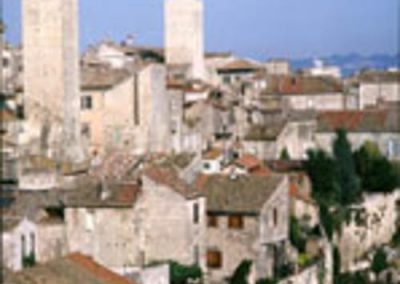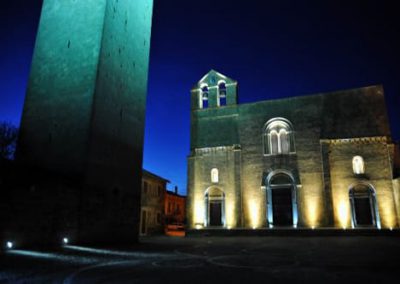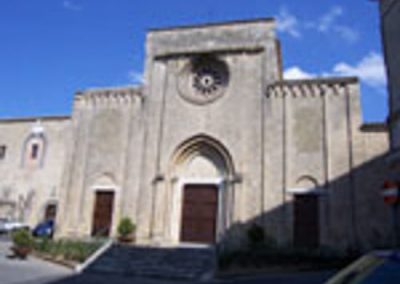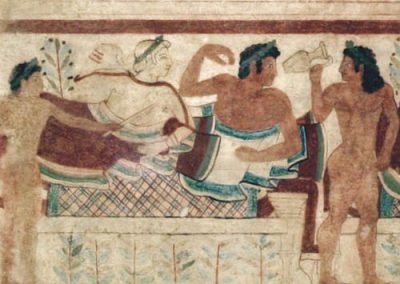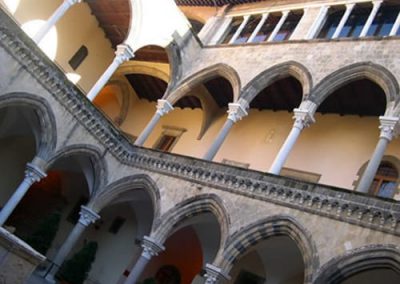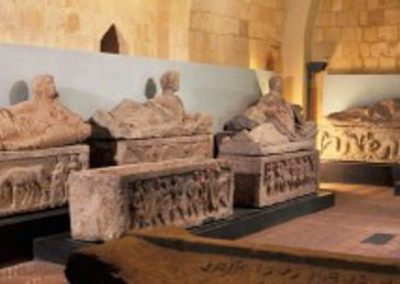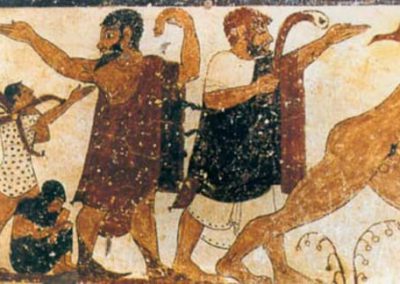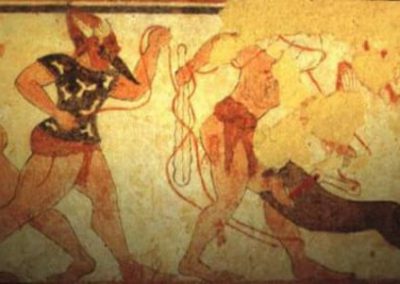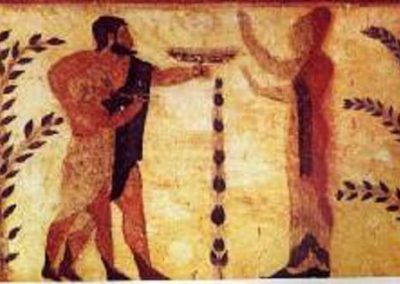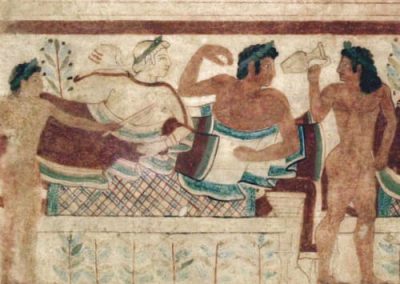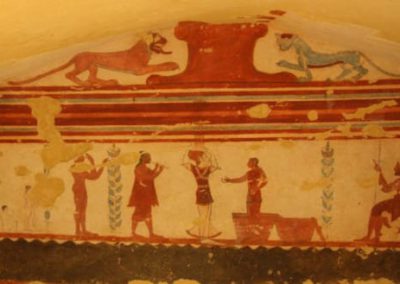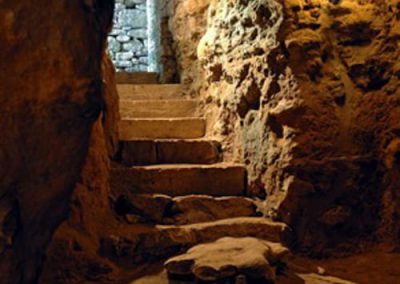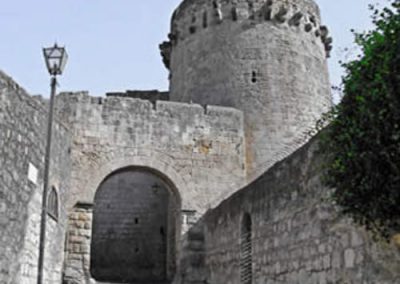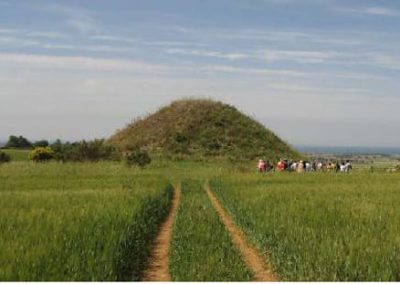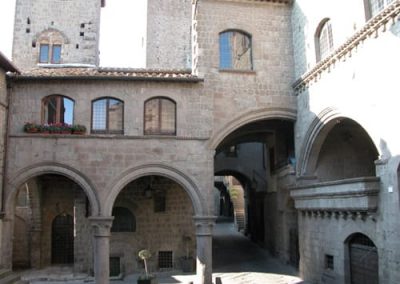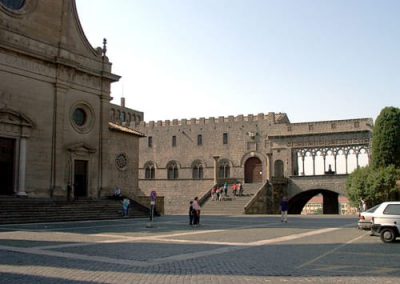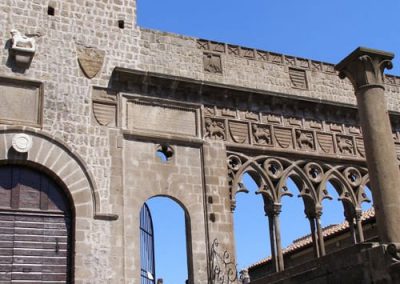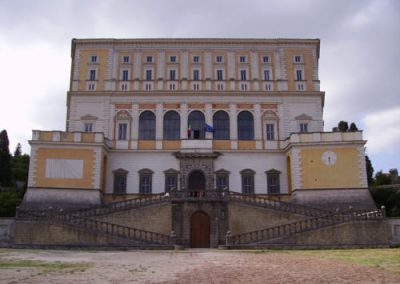THE TUSCIA
Tuscia was the name given to Etruria after the end of Etruscan rule. This is a vast area that is characterized by its wild places, by the presence of important archaeological sites, charming medieval villages, sixteenth-century villas and gardens and by its distinctive flavors.
The cuisine in Tuscia, given the geographical location of this area, is considered a successful blend of flavors, smells and simplicity that remind us the Roman, Tuscan and Umbrian cuisine. The traditional dish is the Acquacotta composed of four basic elements: stale homemade bread, wild vegetables first of all the chicory (along with potatoes, tomatoes, onion), mint and extra virgin olive oil.
The province of Viterbo has 6 D.O.C. wine areas including Tarquinia, EST! EST! EST! and Aleatico. The extra virgin olive oil is among the most popular product of Tuscia in Italy, Canino D.O.P. is the variety of olive oil more flavorful and well known in the area. Do not forget the nuts and chestnuts of Cimini Mountains, the fish of the lakes (tench, perch and whitefish), the eel of Bolsena and the mushrooms: the Porcini that grow mainly along the slopes of the Cimini Mountains and the Ferlenga abundant in the area of Tarquinia and Monte Romano.
Tarquinia is…
The Sea
Tarquinia Lido, located 5 Km from the city has a sandy beach and has many functional infrastructures. The seaside town is full of hotels, villas and numerous camping and sports facilities, surrounded by pine trees and overlooking on the beach.
Gravisca
On the coast, near Porto Clementino, lie the remains of Etruscan dell’emporion Gravisca. the remains are visible of an important place of worship, located on the edge of the Roman colony, raised in 181 BC, on the ruins of an earlier Etruscan settlement. The shrine, attended by 600 BC the third century BC, is articulated in various places of worship dedicated to Greek and Etruscan gods.
Porto Clementino
Imposing ruins are creeping into the sea and witness the presence of an ancient port structure: the port of the Roman Gravisca rebuilt and strengthened under the pontificate of Pius II (1458-1464), was defended by a circular tower, the remains of which, because of ‘ retreat of the coastline have ended up in the sea. The name comes from the restructuring carried out by Clement XII in the eighteenth century. It was destroyed during the Second World War.
Civita
The Etruscan town of Tarquinia (in Etruscan Tarkna) was located about ten kilometers from the coast, where it was located Gravisca, the main port, an important emporium of Mediterranean. The settlement that occupied, in extension, about 140 hectares, was located on a hill, called Pian di Civita, overlooking the valley of the river Marta, an emissary of Lake Bolsena and navigable from the sea to the town of Civita Pian is divided from the coast by long and parallel Monterozzi hill, site of historic cemeteries, on whose western spur settles the medieval town of Corneto and today’s Tarquinia. The geographical position contributed to its flowering and its affirmation as the Etruscan settlement had also facilitate contacts with the hinterland through the valley of the river Marta. Its territory was located in a strategic position between the territories of two other powerful city? Was Etruscan Cerveteri and Vulci in south nord.Il landscape Tarquinian campaign, geologically very complex, it is distinguished from that of other centers of Etruria, in predominantly positioned in tuffaceous territories. On the plateau of Pian di Civita you can see the base of the temple called “Ara della Regina”, dating from the fourth century BC whose clay decorations were part of the Winged Horses, now on display in the National Museum of Tarquinia.
Necropolis
The graves are painted a peculiar aspect of Etruscan artistic culture, the only example of ancient wall painting, known through the testimony of the sources. The frescoes inside the painted tombs of Tarquinia are the only contemporary example, the great contemporary Greek painting, come down to us. To date it has knowledge of 180 Etruscan tombs with wall paintings: 140 are located in Tarquinia. Only Tarquinia therefore offers us a large number of monuments from the Archaic (sixth century BC) and extend to the end of the Roman Republican era (meth? I century BC), revealing in this city the existence of a thriving and unbroken tradition pictorial. This enormous wealth not only artistic but also historical represents an insight into the life of 3000 years ago and has been included since 2004 by UNESCO World Heritage Site. Now is accessible 19 tombs in the necropolis portion open to the public, in the locality of Calvary. From March to October they are extraordinarily open, with the collaboration of the City, four of the most popular tombs: Tomb of the Bulls, the wishes, the Baron, and Scataglini bottom, accessible with guided tours.
The National Etruscan Museum
The National Etruscan Museum is housed in Palazzo Vitelleschi, dating from the fifteenth century. The exhibition is located on the three floors of the building. The rooms on the ground floor welcome, in chronological sequence, the stone material of the museum collections including sarcophagi, dating from the mid-fourth century BC To highlight the 10 room that contains the most valuable sarcophagi, some of which are carved in marble greek, it belonged to some of the most prominent families of Tarquinia the mid-fourth century BC: the Partunu the first floor are exposed furnishings from the excavations of the necropolis. The visit starts from the last room of the gallery which is home to the oldest materials date back to the Villanovan period (IX-VIII century BC) The following rooms are arranged in chronological order, then proceeding you can admire the finds dated to Orientalizing period (late VIII-VII century BC.); vases imported from Greece by the end of the eighth to the sixth century B.C. .; the Etrusco-Corinthian pottery that the Etruscans produced in imitation of the Greek and bucchero, the typical Etruscan ceramic, economic reproduction of the bronze pottery. Following the import ceramics coming from Attica, made with the technique of black figures and with red figures, dating from the sixth century BC In one of the Ballroom showcase is a choice collection of bronze Etruscan coins, melted and minted gold coins dating back to the late Roman Empire, found in the excavations of the Roman colony of Gravisca, raised in 181 BC Proceeding on these rooms you can admire locally produced artefacts, which is ceramic-metallic mirrors, balsam, furnishings. The last room gathers votive, gifts offered to the deity or to receive a pardon or for favors received, from Ara Shrine of the Queen. On the second floor there is a quadrangular porch from which you can enjoy a magnificent view of the city and the countryside. In a group of air-conditioned rooms they are kept the paintings of some detached graves: Triclinio, Chariots, Olympics, Ship. In Arm Room exposes the Winged Horses, clay high-relief dating from the fourth century BC, which was part of the Ara della Regina temple decoration. Complete the exhibition a selection of artefacts found in the great excavations of Tarquinia, managed by the University of Milan with regard to the Etruscan city and the University of Perugia regarding the site and the port of dell’emporion Gravisca.
Saline
Populating the Nature Reserve Animal “Salina Tarquinia” was established in 1980 with the express purpose of protecting the environment and encourage the repopulation of some animal species. The area covers approximately 170 hectares, covering a coastal strip in the municipality of Tarquinia, between the mouth of the River Marta and that of Mignone River; It is presented as a wetland of great natural value, a character mostly sandy, where the typical vegetation of the coastal dunes and saline environments appear. You can see different species of birds, resident and migratory: egret, herons, pink flamingos, the knight of Italy and squacco. The hamlet of Tarquinia salt began to rise on the late nineteenth century with the aim of achieving an appropriate housing settlement to house the workers who worked in the plant. In addition to residential buildings, it was necessary to build a guard garrison in surveillance purpose, a seat for the executive and administrative offices, a monumental building for the shops and the inn. No less important was the building of the school and a recreational facility. In the first three decades of the twentieth century, the last of the village buildings were built: the church, the cistern for water supply and the building of “Sali chosen.”
Roccaccia
Food and Wine
Territorial Overview
Wines
TUSCIA’S DOC WINES:
- Aleatico di Gradoli
- Tarquinia
- Orvieto (whose production area covers much of the province of Viterbo)
- Est! Est!! Est!!!
- Colli Etruschi Viterbesi
- Vignanello
- Cerveteri (for the province of Rome)
TUSCIA’S IGT WINES:
- Civitella d’Agliano
- Colli Cimini
- Lazio
Typical products
CHEESES: sweet Caciotta of Tuscia, g of Pecorino, Roman DOP Pecorino, Ricotta Tuscia.
FISHES FROM LAKE: Anguilla di Bolsena, Whitefish Lake Bolsena
MEATS: Lamb of Tuscia , bovine meat Maremma , Green Rabbit ” Leprino of Viterbo “.
SAUSAGES: Capocollo of Tuscia (or loin ) , the head of Tuscia Cup , Tuscia Pillow , Porchetta rolled Tuscia , Tuscia ham , cotto salami , Susianella of Viterbo.
Vegetables: Mushroom Ferlengo Tarquinia, red garlic of Proceno, Asparagus of Canino, Artichoke Tarquinia, Cece Valentano, Gradoli Purgatory Bean, Farro of Acquapendente, hard Maremma Viterbo, Onano Lentils Wheat, Potato Alto Viterbese, Brown Cimini, the Cimini Mountains Hazelnut.
Not to forget the typical of the Monte Rufeno Honey.
Desserts
Among the sweets of Tuscia, of course, there will be ample those prepared with nuts and dried fruits such as: Tozzetti of Viterbo hazelnuts, Pangiallo of Tuscia, Bread Bishop, gingerbread.
Other sweets are very typical: Easter pizza, pretzels Anise, said biscuits “Lavender Buttons”.
Tipical Food
Typical dishes reign surely:
- The “misticanza“, or country salad, made from: wood sorrel, borage, bucalossi, caccialepri, chicory and watercress
- The acquacotta, or soup of the herdsman, prepared exclusively with products (chicory fields, potatoes, onions, garlic, ripe tomatoes, mint, peppe, eggs) boiled in water and served on slices of bread stale bread with extra virgin olive oil raw. It’ a maremmano plate that has many variants related to the seasonal nature of the products, such as that which provides for the asparagus in replacement of the chicory.
- The fritters of Tuscia Rice, prepared especially during the carnival, rice, eggs, milk, raisins and cinnamon.
